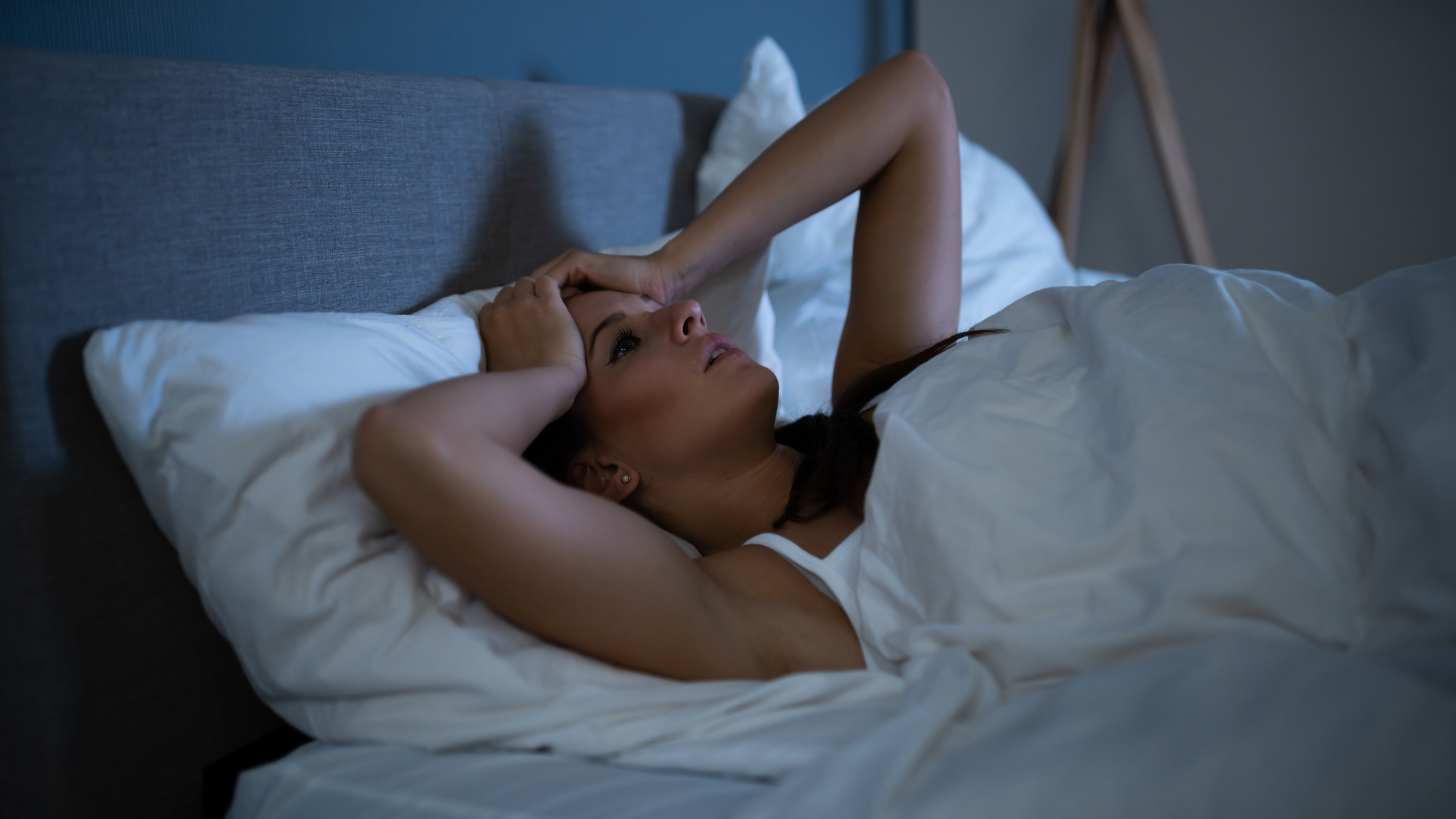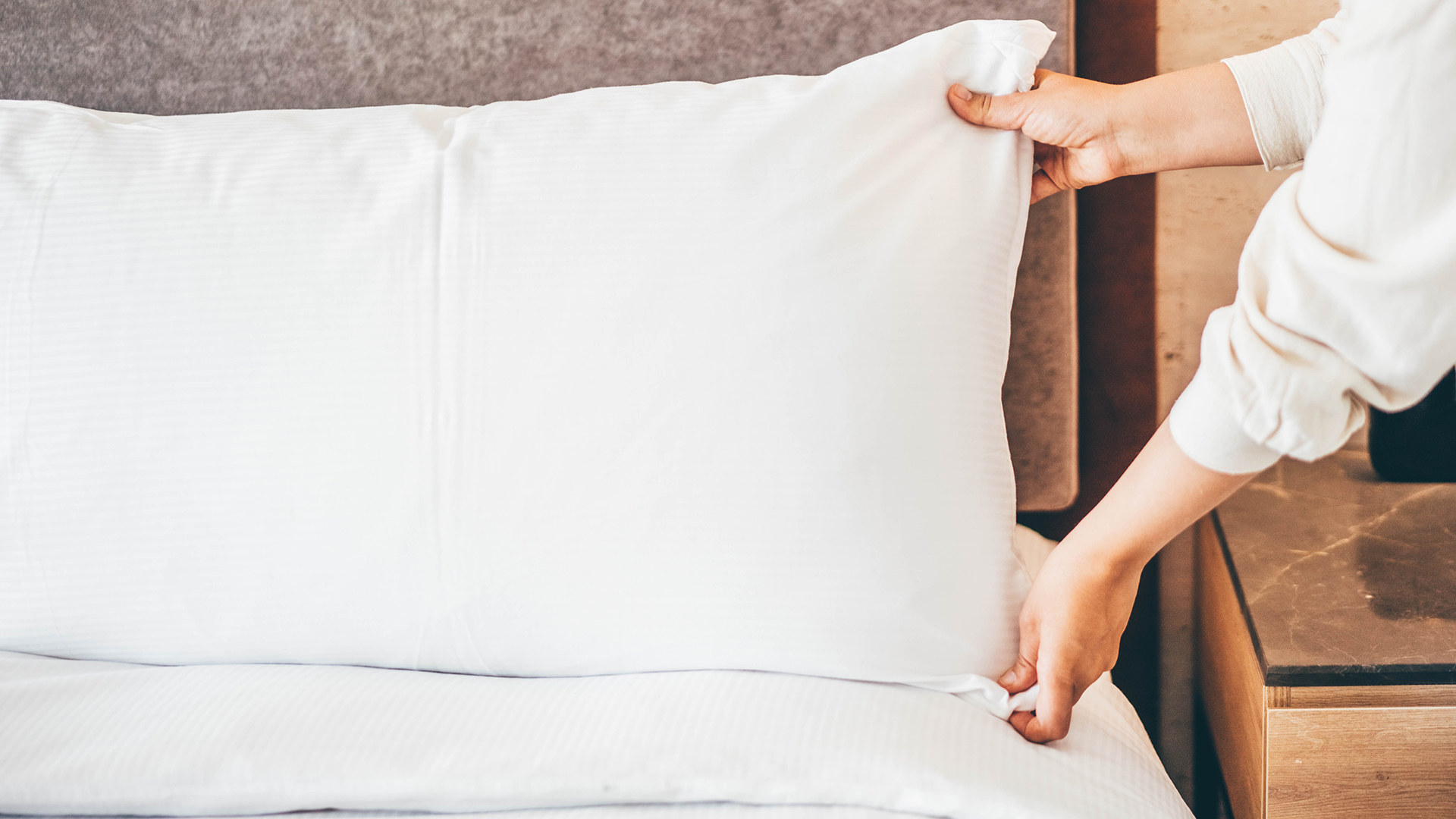Here's why you shouldn't go to bed with wet hair
An expert explains how damp hair can damage your mattress and pillows — and your sleep

A relaxing shower or bath before bed is a great way to wind down for a quality night's sleep. Once you've eased yourself into this blissful calm, the last thing you want to do is expose yourself to a noisy hairdryer. However, for the health of both you and your mattress, it really is worth drying your hair before going to bed.
Going to bed with wet hair can transform even the best mattress into hot bed of bacteria, dust mites and other allergens, like mold. Rex Isap, bed expert and CEO at Happy Beds, describes a wet mattress as: “the perfect breeding ground for bacterial and fungal growth.”
What's more, moisture can reduce the lifespan of both your mattress and pillows. And once they get wet, it can have a serious effect on your health. Here, we'll outline exactly what wet hair can do to your mattress, as well as offering some advice on how to limit the ill-effects.
Why going to bed with wet hair is bad for you and your mattress
1. Susceptible to mold growth
“Water-damaged mattresses are more susceptible to the growth of mold,” explains Rex. “If inhaled or touched, this could result in an allergic reaction such as red eyes and sneezing,” says Rex.
Of course, it’s impossible to avoid touching your mattress or breathing close to it when you spend upwards of eight hours sleeping on it. If your mattress grows mold, it can impact both your sleep quality and health. Mold exposure can trigger respiratory issues, such as asthma, making it difficult to rest peacefully during the night. And it isn't just mold that likes a damp mattress...
2. Bacterial breeding ground
The inside of a warm, damp mattress is the ideal breeding ground for a whole load of nasty things. Bacteria, fungal growth, dust mites, and even bed bugs all thrive in this environment.
“This fungi can then be transferred to your scalp or face, putting you at risk of fungal infections,” says Rex, citing skin infections such as ringworm as a particular risk. Instead of a healthy slumber, you could be spending hours with your hair and skin in close contact with potentially harmful pests, bacteria and allergens.
Get instant access to breaking news, the hottest reviews, great deals and helpful tips.

3. Can damage mattress
If your mattress or pillow is regularly getting wet, it can damage the integrity of the structure within. This is a particular problem for foams, and even the best memory foam mattress can start to deteriorate when damp. This deterioration means your mattress is less supportive, and will need to be replaced sooner.
“Going to bed with wet hair can also result in the fillings of your pillow being unevenly distributed,” says Rex. Lumpy pillows not only look and feel bad, but if an uneven distribution leads to sleeping at an awkward angle, you might wake up with some serious neck ache.
4. Yellow stains on your mattress and pillows
There are multiple reasons why mattresses and pillows turn yellow, and damp is a big cause for unwelcome marks on your bedding. These marks might be superficial damage – perhaps leftover hair product has left a stain – but it could also be something more serious, such as mold. If you think mold is marking your bed, consider deep cleaning your mattress or paying for a professional cleaning service.
5. A funky smell
Noticed an odd funk hanging around the bedroom with no obvious source? It might be coming from your mattress. Sometimes a bad smell will appear before stains and other issues, so even though the problem isn't obvious, your nose knows something is wrong.
When our mattress and pillows trap moisture, the bacterial growth can give off an unpleasant pee-like smell. In order to shift the smell, deep clean your mattress and give it plenty of time to air dry by opening your windows wide and allowing plenty of ventilation into the bedroom.
Protecting your mattress and pillow from water and other fluids
1. Invest in a mattress protector
Life happens, so it's inevitable that your mattress will sometimes get damp. A shower before bed is a great part of the wind-down routine, and it can help you sleep when you have allergies. But just because damp is expected from time to time doesn't mean we can't do anything about it.
A mattress protector is essentially an additional sheet that wraps around your mattress to provide a barrier. There are plenty of types available, but if it’s damp you’re worried, opt for a waterproof mattress protector. The best mattress protector can stop even large amounts of liquids from reaching your mattress, so if you occasionally jump straight from bath to bed, the damage is limited.
Mattress protectors do need to be washed regularly, but the good news is, most of them can simply be tossed into the washing machine. If possible, we recommend a hot wash of 130 F (54.4 C), to kill allergens and bacteria (but make sure to read the care label before washing).
2. Invest in a pillow protector
Pillow protectors are very similar to mattress protectors, acting almost like an additional pillowcase that fits inside your pillowcase. As well as wet hair, pillow protectors can guard against sweat, drool, tears – any bodily fluids that might risk damaging your pillow. Like mattress protectors, they're also very easy to clean, and can help prolong the life of your pillow.

3. Don't make the bed right away
When you wake up in the morning, don’t make your bed right away. Instead, carefully push the covers back and give the bed time to breathe. As the air circulates around the mattress any moisture that has built up overnight — including what you sweat out in your sleep — has a chance to evaporate.
And when you change your sheets (something you should be doing roughly once a week), strip your bed and leave the mattress bare for a few hours. This allows allergens to dissipate. While the bed airs, take a moment to check it over and look for any signs that damp has been damaging your mattress.
4. Air your bedding

Aim to wash your bedding on a sunny day so that you can leave it outside to air dry (in direct sunlight, if possible). The UV rays from the sun are capable of killing dust mites and bacteria in your bedding, as well as breaking down and killing lingering mold.
If you've spotted signs that your mattress need replacing or it's over eight years old, you might feel like your bed is past saving - especially if you frequently go to bed with wet hair. Buying a new bed can be expensive, but timing your purchase to coincide with the Memorial Day mattress sales in May will mean the biggest savings. You might want to look out for a hairdryer, too...

Ruth is an experienced Senior Staff writer at Tom’s Guide, covering all things sleep and mattresses. She writes to help people sleep better, from how-tos to the latest deals to mattress reviews, and has interviewed an array of experts who share her passion. She is also our specialist on memory foam — she’s flown around the world to see memory foam being made — and leads our hotel mattress content. She has a deep interest in the link between sleep and health, and has tried enough mattresses, from Helix to Nectar to Simba, to know the right bed really can make a difference to your wellbeing. Before joining the team at Tom’s Guide, Ruth worked as a sleep and mattress writer for our sister website, TechRadar.
